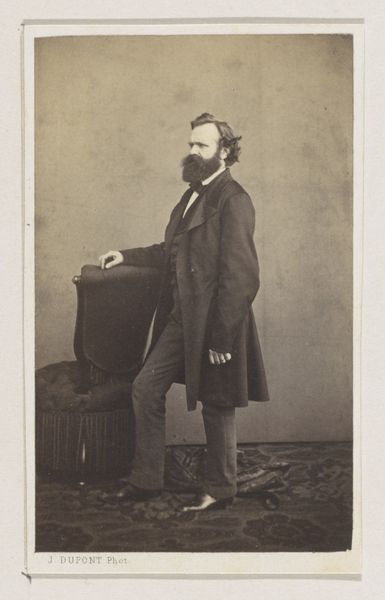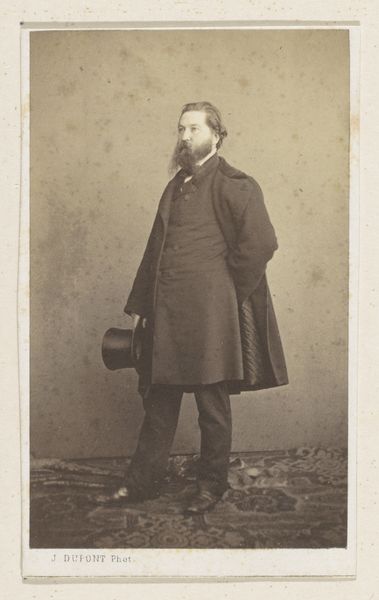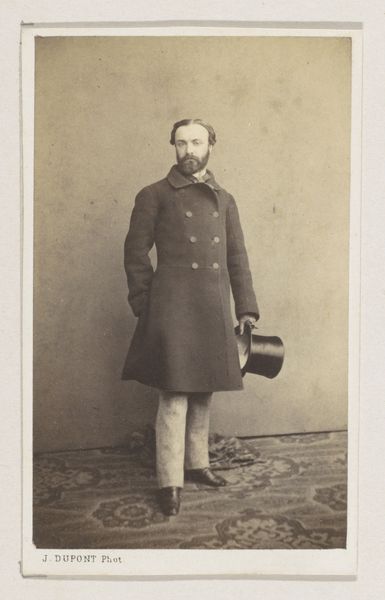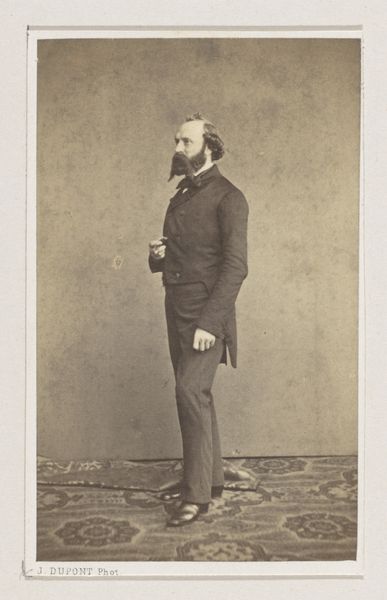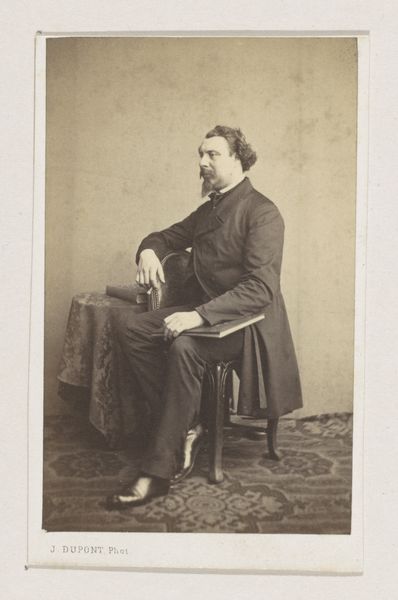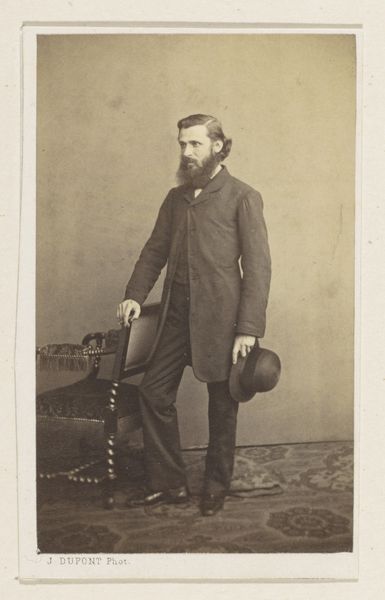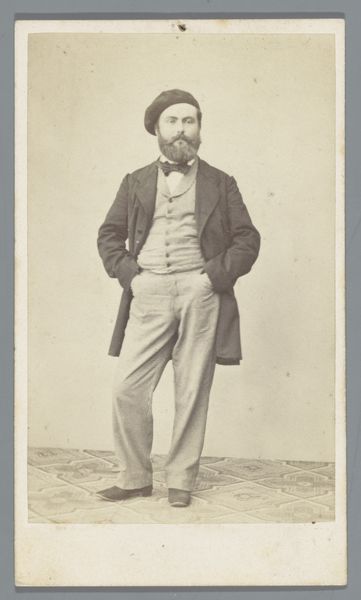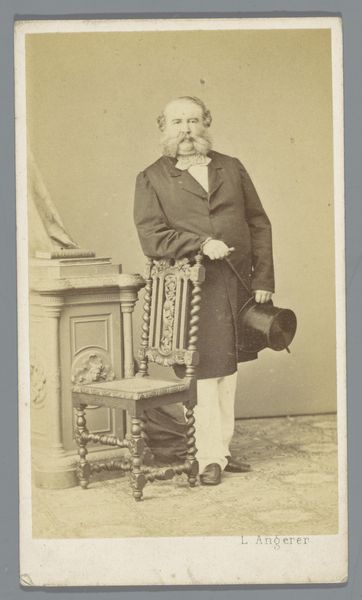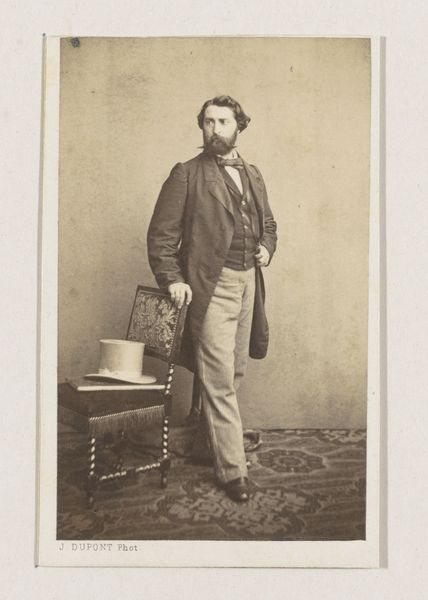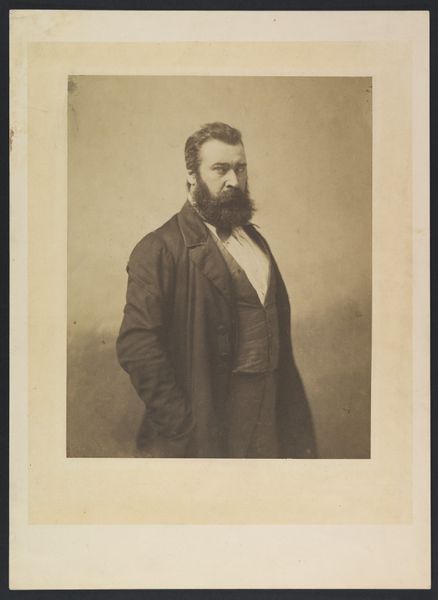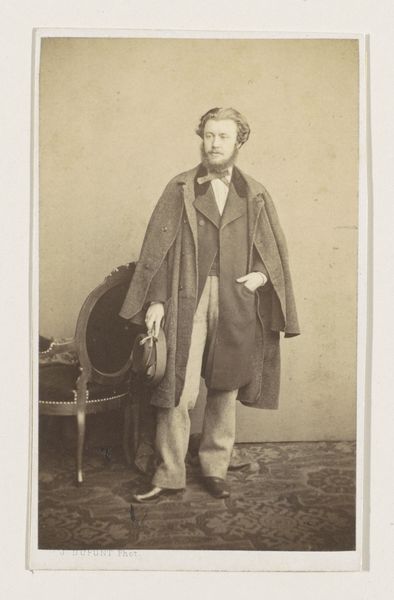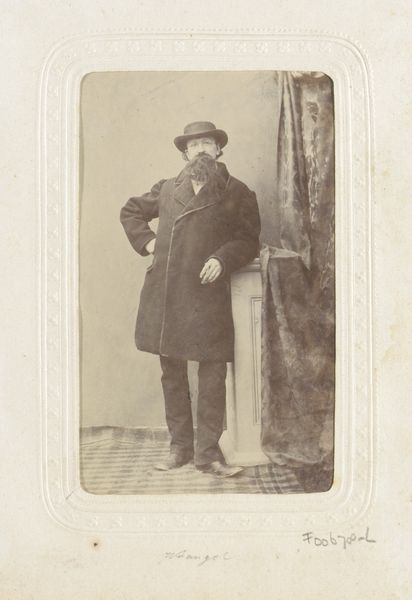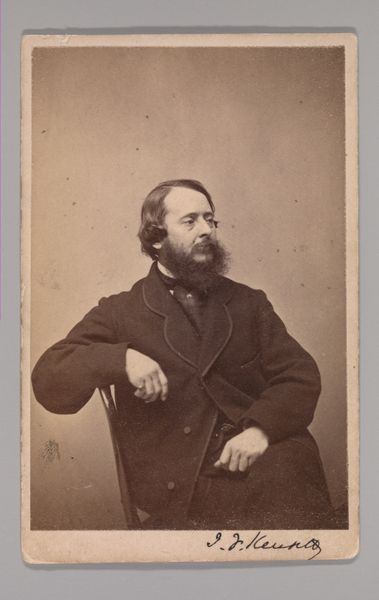
Dimensions: height 102 mm, width 62 mm
Copyright: Rijks Museum: Open Domain
Editor: This is a photographic portrait from 1861 by Joseph Dupont, titled "Portret van de schilder Victor Lagye, ten voeten uit." It's a full-length portrait, a gelatin-silver print. It’s quite formal and reserved, wouldn't you say? What strikes you about it? Curator: Well, given the context of its time, it offers a fascinating glimpse into the construction of identity and the performance of masculinity. Think about the sitter, a painter. How does he want to be seen? He is very self-assured, as we consider pose, clothing and other compositional elements. Dupont captured this artist through a lens that largely excluded working-class populations at the time. What are your thoughts on the way wealth and social standing are portrayed here? Editor: It feels like the artist is aware of his position, both in society and in front of the camera. He's not just posing, he's performing a role. Does the photographic medium play a part? Curator: Absolutely. Photography in the mid-19th century was still relatively new. For the burgeoning middle class, portrait photography provided an access to representation formerly available only to the aristocracy, changing the perception of public life and self-image. Photography also played a huge role in reinforcing then dominant racist anthropological views of classifying and judging humanity, Editor: So, the act of having your photograph taken, especially in a formal portrait like this, was a statement in itself? A privilege of class? Curator: Precisely! And let’s not forget how portraiture served as documentation—an assertion of presence, legacy, and, ultimately, power in an era grappling with significant social transformations. Consider how the photograph’s composition influences your viewing experience and shapes your perceptions. How do you feel this plays into its impact? Editor: That's really thought-provoking. I hadn't considered how photography itself could be a social act. I see this photograph differently now, as a capture of not just a person, but also a moment of socio-economic transition and class awareness. Curator: Indeed. It reveals the intricate dance between representation, identity, and the social forces at play during that time, still echoed even in our modern engagement with images.
Comments
No comments
Be the first to comment and join the conversation on the ultimate creative platform.
